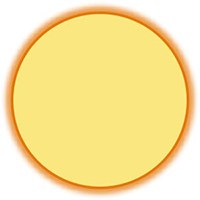This time of year also means being extra vigilant about sun safety and biting insects.

Spring, sun, warmer weather and longer days means many exciting things including exploring the outdoors, going on picnics, and trading in the puffy winter coat for short-sleeved shirts and shorts. This time of year also means being extra vigilant about sun safety and biting insects. Exposure to ultraviolet (UV) light from the sun is the most preventable cause of skin cancer. Just a few serious sunburns as a child can increase the risk of skin cancer later in life. Biting insect populations tend to soar with the warmer temperatures too. Mosquitoes, ticks, and other insects can transmit diseases including West Nile Virus (WNV) and Lyme disease. But don't worry! There are ways to keep children safe and still enjoy the outdoors.
Reduce sun exposure
- Keep children in the shade or indoors to prevent sunburn, especially during the midday hours (10 a.m. to 3 p.m.).
- Ask children to wear hats. Wide-brimmed hats offer more protection than baseball cap styles.
- Have children wear child-safe, shatter-resistant sunglasses rated to block 100% of both UVA and UVB rays.
- Dress children in tight-woven, loose fitting clothing that covers the skin.
- Watch the daily UV index. Pay particular care to sun safety precautions when the index is moderate or higher.
- Use sunscreen on exposed skin in conjunction with other safety precautions.
How to purchase and use sunscreens
- Do not use sunscreen products on children younger than 6 months.
- Choose "broad spectrum" products with an SPF between 15 and 50.
- Sunscreens with titanium dioxide or zinc oxide are generally safer for children than those with other ingredients.
- Follow all label instructions.
- Apply generously to all exposed skin including hands, feet, face (avoid eye area), ears, and behind the neck thirty minutes before going outside.
- Reapply often, at least every 2 hours, especially if children are playing in the water or sweating a lot.
Avoid:
- Spray/aerosol sunscreens because inhaling them may pose serious health risks.
- The ingredients oxybenzone, octinoxate, and vitamin A.
- Sunscreen/insect repellent combination products. Sunscreen usually needs to be reapplied more often than insect repellent. If using a combination product initially, reapply a sunscreen-only product every two hours.
Minimize insect bites
- Use nets over baby strollers and carriers.
- Remove stagnant water sources on playgrounds and around the facility.
- Mow the grass often, and clear leaf litter and brush.
- Minimize tick migration by placing gravel or wood chips between lawn edges and wooded areas.
- Keep playground and other outdoor play locations away from yard edges and wooded areas.
In tick-prone areas:
- Ask parents to put children in light-colored clothing. Tuck shirt into pants and tuck pants into socks.
- Ask children to wear closed-toed shoes.
- Conduct a tick check on every child upon returning inside.
How to purchase and use insect repellents
- Use products that come in lotion, pump or towelette form. Avoid aerosols.
- Wash repellent-coated skin when returning inside.
- Wash clothing with repellent on it in a separate laundry load if possible.
Safer ingredients to look for:
- DEET - select products with 10% - 30% DEET depending on age of child and length of time outside
- Picaridin
- IR3535
- Oil of lemon eucalyptus (not the same as natural lemon eucalyptus oil) or PMD (para-menthane-3,8-diol) - Do not use on children under the age of 3 years.
To apply insect repellents and sunscreen products, read and follow all label directions and precautions. Some products have specific warnings regarding use on children.
- Apply sunscreen products first if using insect repellent also.
- Apply repellents to exposed skin and/or clothing according to label directions. Don't apply repellent under clothing.
- Adults should apply the repellent to their hands first and then spread on the child's exposed skin (avoid child's hands and around eyes and mouth, use sparingly around ears). Do not let children handle or apply insect repellent themselves.
- Apply a light application to exposed skin and/or clothing. Do not saturate.
References:
-
American Academy of Pediatrics, American Public Health Association, National Resource Center for Health and Safety in Child Care and Early Education. 2011. Caring for Our Children: National Health and Safety Performance Standards; Guidelines for Early Care and Education Programs. 3rd edition. Elk Grove Village, IL: American Academy of Pediatrics; Washington, DC: American Public Health Association. Also available at http://nrckids.org.
-
Centers for Disease Control and Prevention. 2014. "How Can I Protect My Children from the Sun?" http://www.cdc.gov/cancer/skin/basic_info/children.htm
-
Environmental Working Group. 2014. "2014 Guide to Sunscreens." http://www.ewg.org/2014sunscreen/
-
Environmental Working Group. 2013. "Guide to Bug Repellents." http://www.ewg.org/research/ewgs-guide-bug-repellents
-
U.S. Environmental Protection Agency. 2014. "Using Insect Repellents Safely and Effectively." http://www2.epa.gov/insect-repellents/using-insect-repellents-safely-and-effectively
-
U.S. Food and Drug Administration. 2014. "Insect Repellent Use and Safety in Children." http://www.fda.gov/Drugs/EmergencyPreparedness/ucm085277.htm

